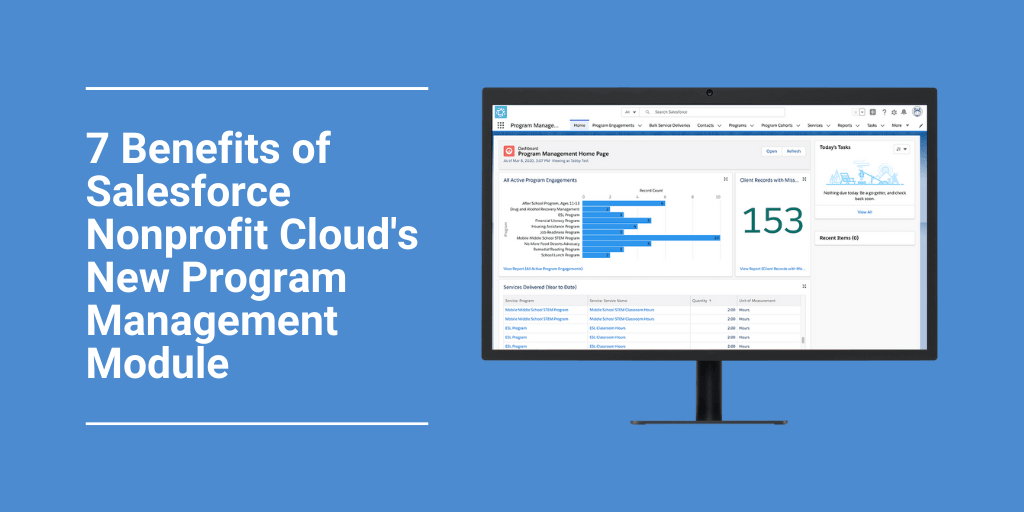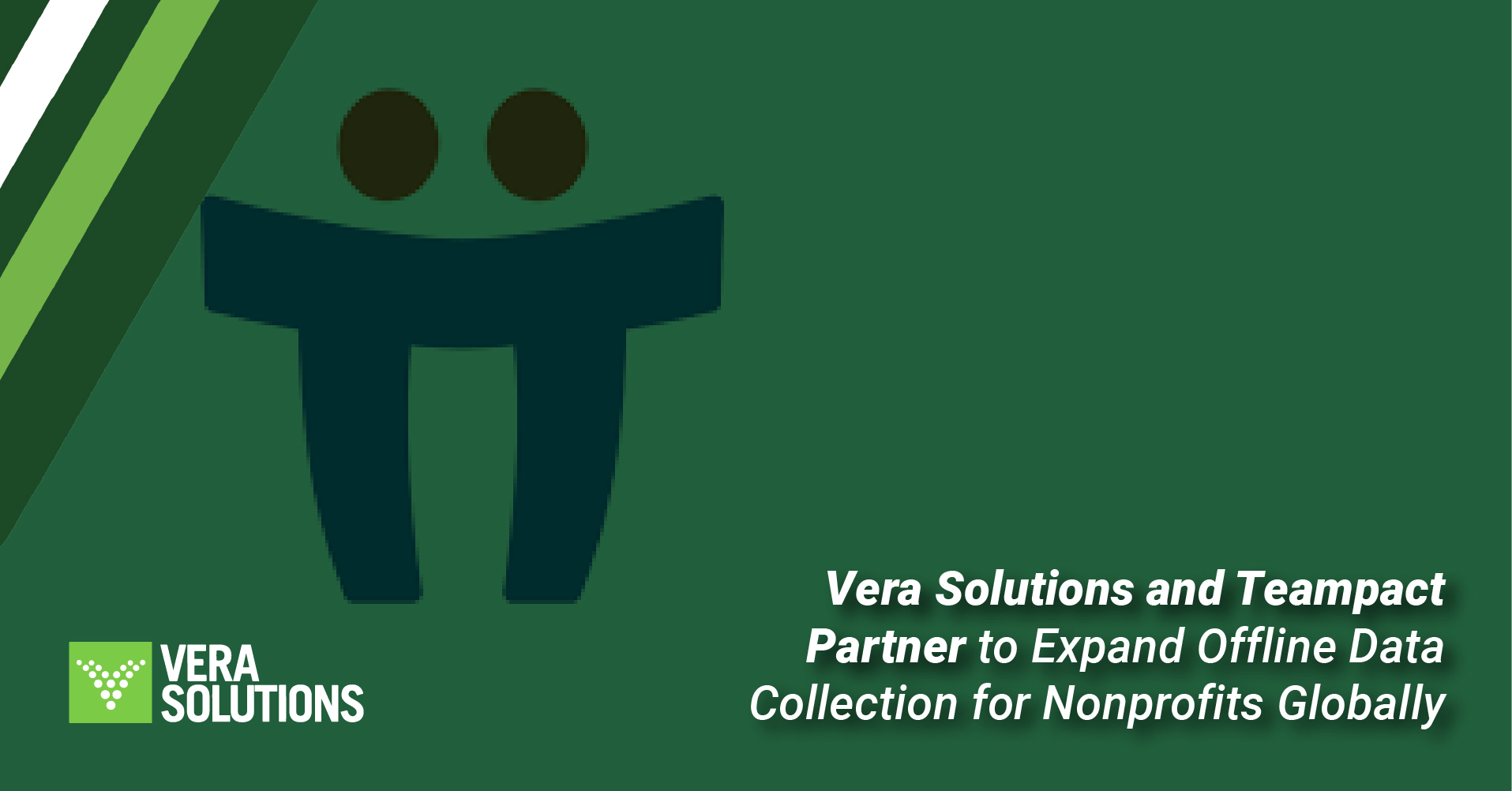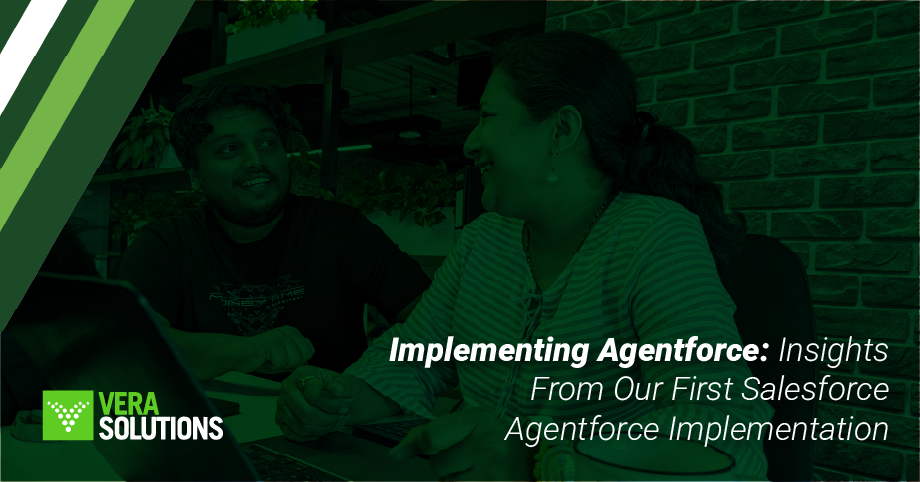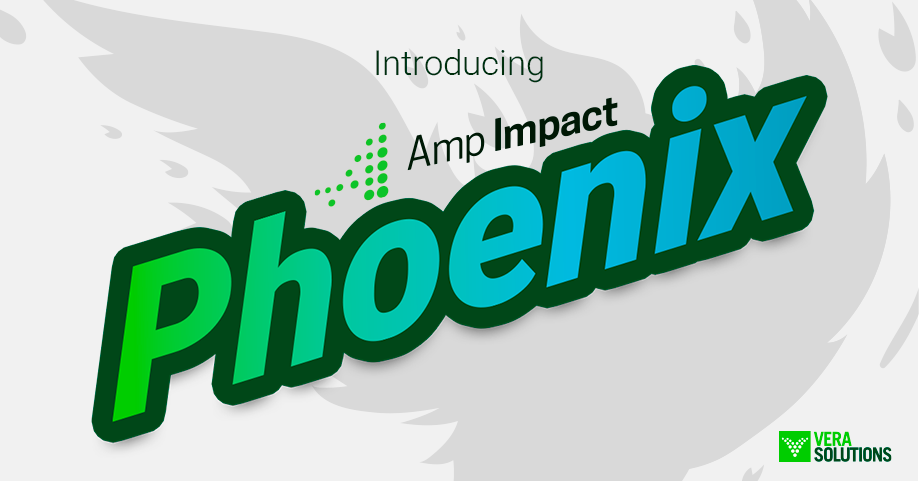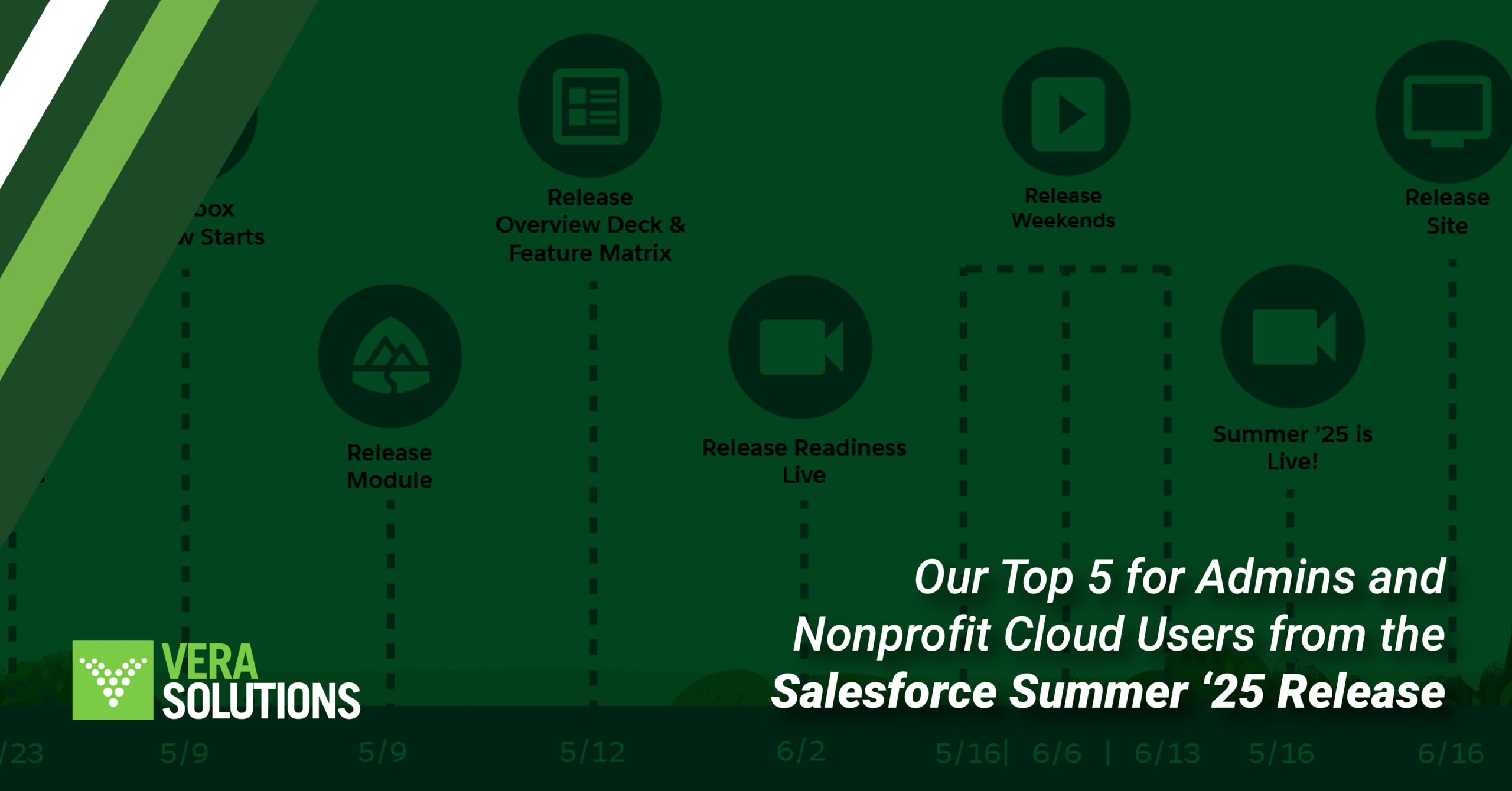Salesforce.org has just released a whole slew of new products and feature enhancements that have generated a lot of excitement here at Vera. One of these, the Program Management Module (PMM), has been in the works for a while – we are delighted to see it brought to life and hope it helps many more nonprofits realize the benefits of using Salesforce for program management.
On the surface, the PMM may sound redundant or even competitive with Amp Impact – in fact, it’s quite the opposite. Whereas Amp Impact offers a portfolio management and portfolio-level impact measurement solution (using logframes, indicators, targets, and results), the PMM is focused on tracking individual beneficiaries and their engagement with programs and services. For organizations working across multiple geographies, tracking at both of these levels is crucial, and data can automatically ‘roll up’ from the PMM objects into Amp Impact’s Indicators and Results. Moreover, both tools are 100% native to the Salesforce Platform, meaning users of both tools can benefit not only from their interoperability but from a seamless, consistent user experience.

The PMM is a managed package that provides the data architecture, interface, and automation to track programs, program engagements, cohorts, and service delivery in Salesforce. It was developed with a view to offer nonprofits a standard framework for on-the-ground program management alongside other products in the Nonprofit Cloud.
At the outset, we can see at least seven ways in which the PMM will break down barriers for nonprofit data management.
1. It sets standards for service delivery in the sector.
The data architecture allows you to capture basic identifying details about your programs (e.g. program name, focus area, target population) and about those who benefit from them. It contains functionality to segment program participants by cohorts and track how they engage with different program offerings. Out-of-the-box reports answer questions such as how many clients have enrolled across programs and how many services have been delivered to date.
2. It sweetens the deal for nonprofits already on the platform.
Should you choose to add the PMM to your Salesforce instance, you can rely on all the great benefits of using Salesforce in the first place – robust upgrades and maintenance, a flexible user interface, powerful reporting capabilities, and the opportunity for further customization or integration.
The PMM comes out-of-the-box with automation that can easily be customized or extended by a System Administrator with ‘clicks not code’. Giving your team a leg-up, the PMM includes automation to standardize record names and dates based on common nonprofit use cases, while leaving you the option to personalize the attributes for your organization. Naturally, you can always work with a consulting partner to help ensure a successful implementation and rollout.
Get in touch to learn more about Vera’s consulting support offerings.
3. It solves a critical piece of the M&E puzzle for nonprofits.
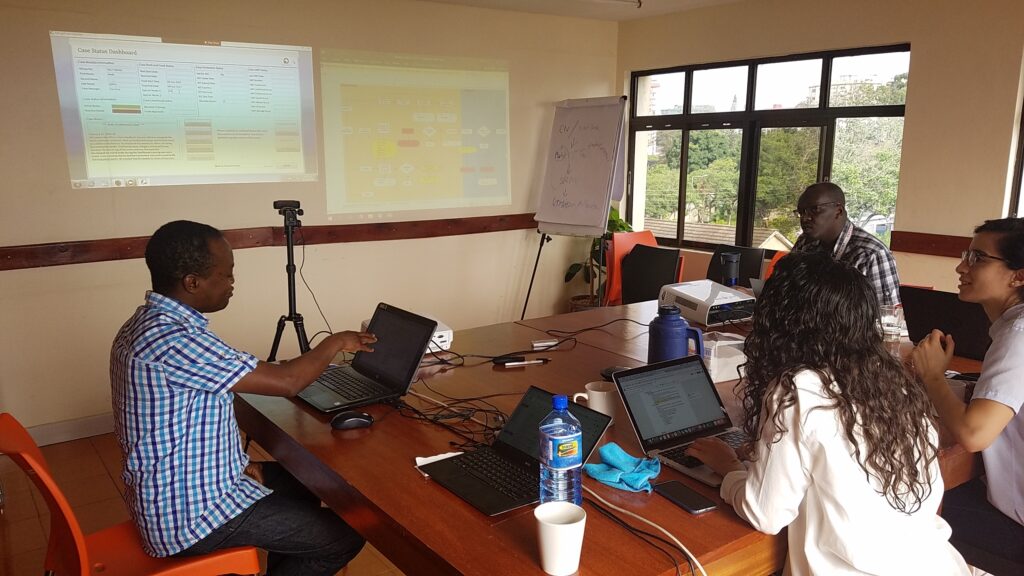
4. It provides widespread possibilities for integration.
We’ve already spoken above to the complementarity and integration potential offered by the PMM and Amp Impact. We see great yin-yang potential for these two tools, as PMM data from frontline program delivery can feed into impact indicator results across geographic and thematic areas in Amp Impact.
Beyond Amp Impact, there are many other independent software vendors (ISVs) offering tools on the Salesforce AppExchange – from form builders to document generation to mobile data collection, providing you with a buffet of choices to cover all of your requirements. You could integrate the PMM with intake forms on FormAssembly, collect beneficiary survey responses using Salesforce Surveys, generate client printable profile PDFs using Conga Composer, map your program delivery data using MapAnything or Geopointe. The possibilities are virtually endless, and that’s what makes the Salesforce ecosystem so powerful.
The PMM is also optimized to work with Salesforce.org’s other new innovation – Case Management, which is a paid product that introduces a data model and features to create sophisticated case plans for individuals and track your clients’ progress throughout their engagement with your organization.
5. It eases data entry for field practitioners.
Enter the PMM Service Delivery Tracking functionality, which allows you to create Service Delivery records in bulk within a single user interface. Now you can quickly look up your clients, choose the program engagement that is relevant, and indicate their attendance or whether they have received a service at a given point in time. Then you simply add more clients in the same view, rely on the auto-save functionality, and quickly get a job done that may otherwise take hours.
6. It expands the conversation for nonprofits using Salesforce.
If your organization uses the PMM, you will be sure to have a stake in the conversation about how the product grows and evolves, as with the NPSP. In fact, if you are already a Salesforce user, you can already follow and join the conversation in the PMM Group in the Power of Us Hub.
7. It’s available at no extra cost.
Start benefiting from the Program Management Module today!
The value-add of the PMM for nonprofits using Salesforce is clear and we’re excited to see organizations start to benefit from this highly anticipated development. Now that there are some universal standards set for program data management, we expect to leverage the PMM with clients for whom it is appropriate and who haven’t yet dived into managing service delivery data on Salesforce. We are particularly excited to see how the PMM can provide grassroots delivery tracking capabilities in conjunction with Amp Impact’s portfolio-level impact measurement and program, project, and grant management functionality.
Contact us to learn more about how your organization can start benefiting from the new PMM.

